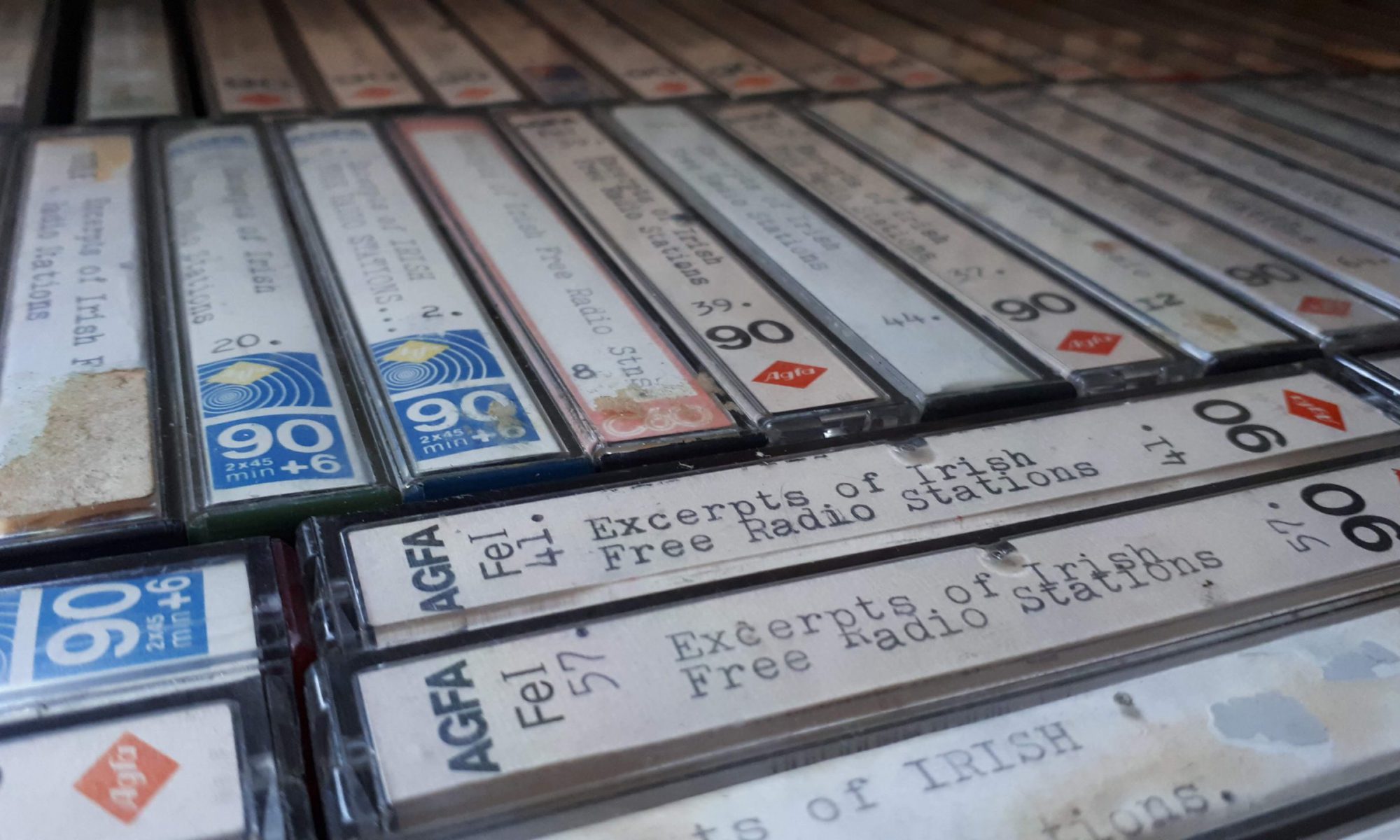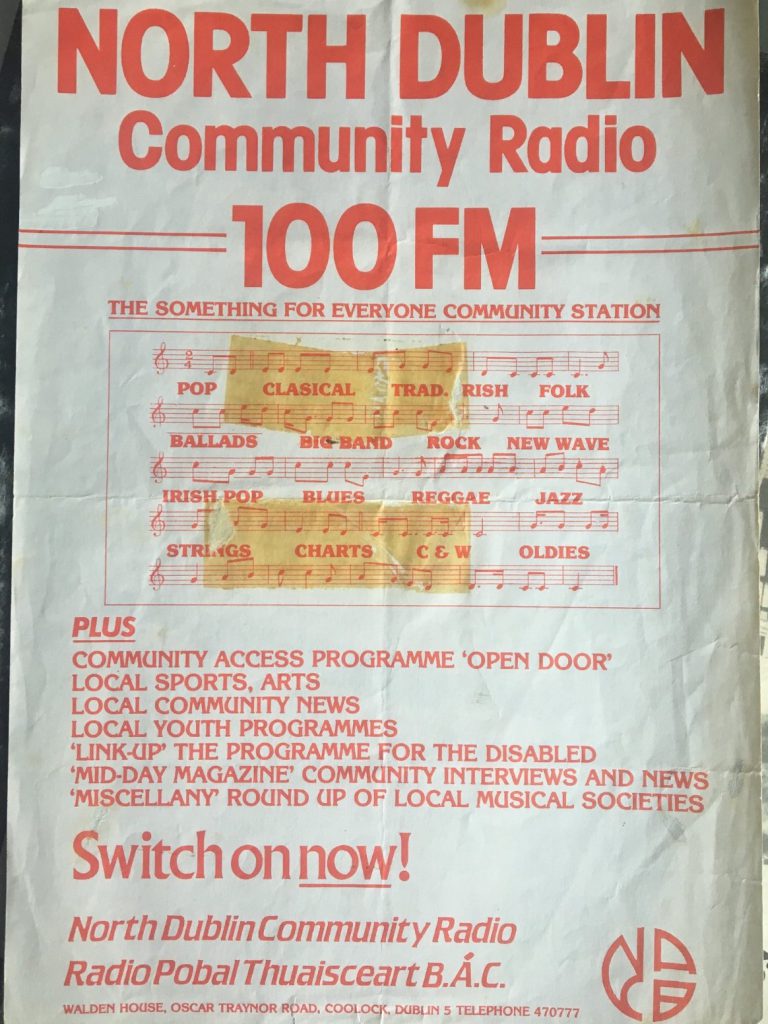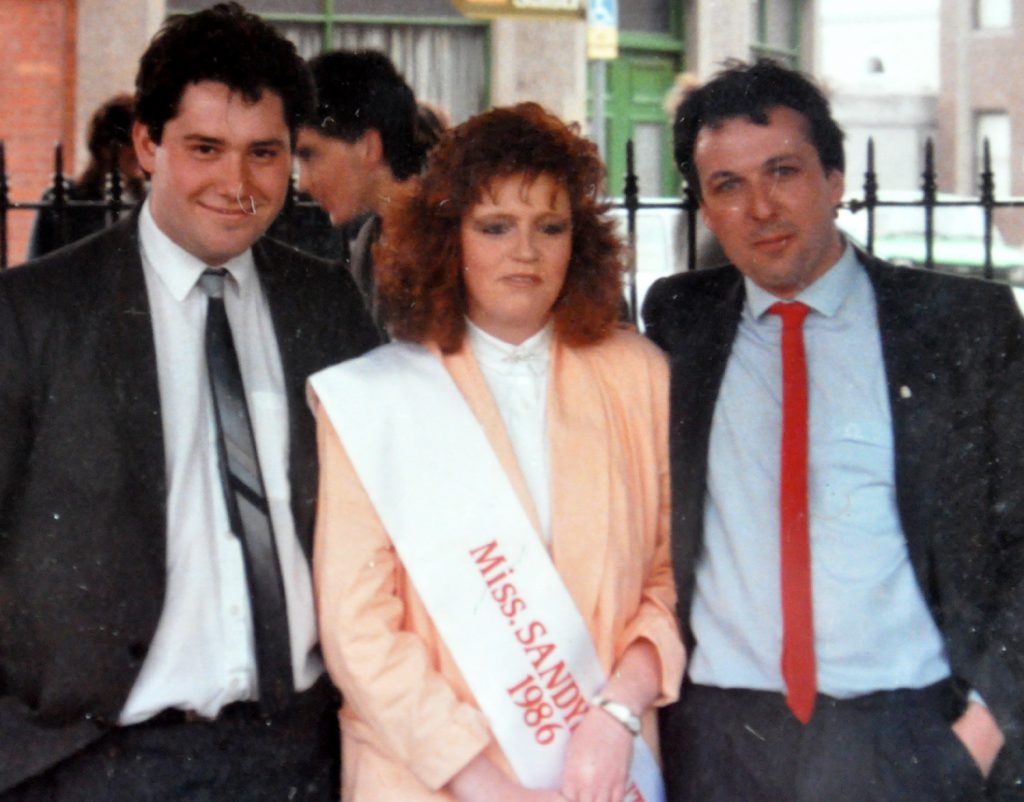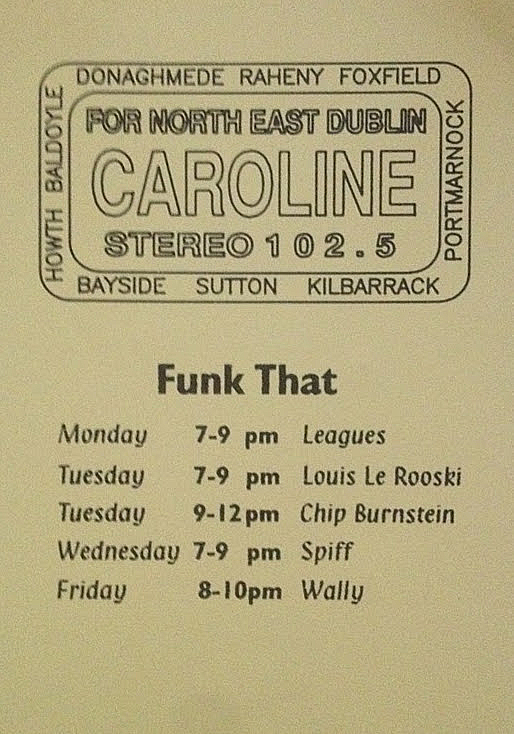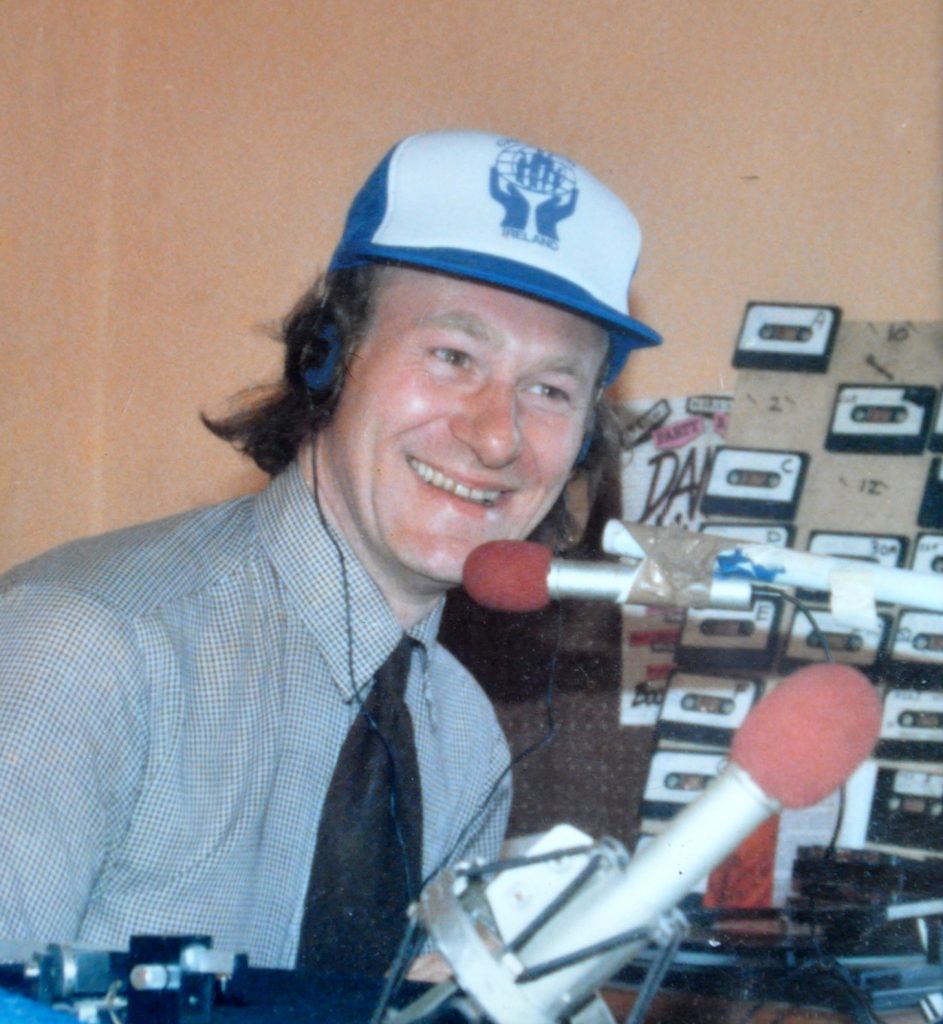Podcast: Play in new window | Download
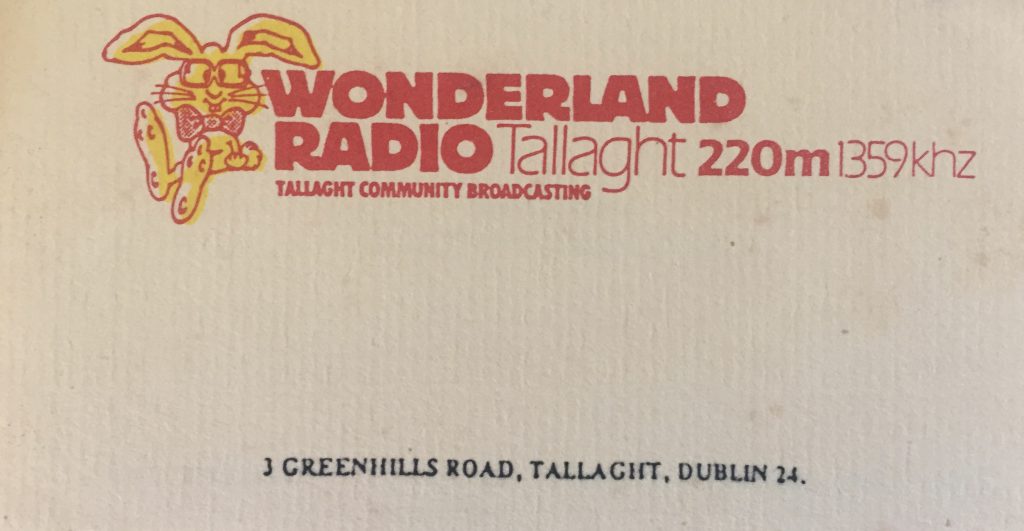
Wonderland Radio was the community station for the large suburb of Tallaght in southwest Dublin, broadcasting from 1984 to the end of 1988. Its promotional material used the strapline ‘Tallaght Community Broadcasting’ and the station changed its name to Tallaght Community Radio in the summer of 1986. Wonderland/Tallaght Community Radio was a member of the National Association of Community Broadcasters that lobbied for the licensing of non-commercial radio stations throughout the decade. Many of those involved in the pirate station set up the licensed Tallaght FM (1999-2008).
This tape from 1984 features part of the Midday Miscellany programme. The unidentified presenter shares recipes, a community notebook and a segment on mental health. There are promos for a small adverts slot and the Tallaght People of the Year Awards. Audio quality is fair to poor in places with over-modulation of the signal and variable audio levels. Some splatter is heard also, presumably from the powerful Manx Radio signal on the the neighbouring 1368 kHz frequency, which would have been strong at the reception location.
The recording was made from 1359 kHz, announcing 220 metres, on 15th August 1984 from 1215-1302. It is from the Skywaves Tapes Collection. Radio Skywave International was a 1980s shortwave station broadcasting from Baldoyle in northeast Dublin.
